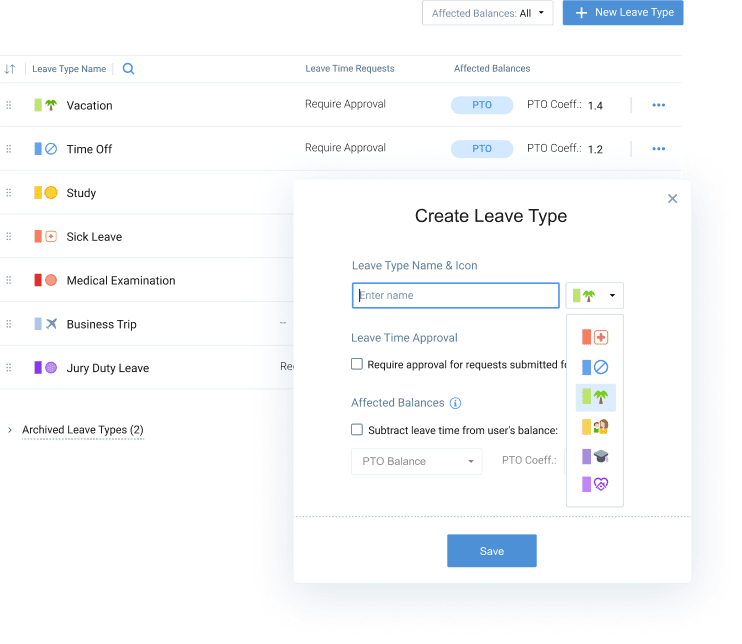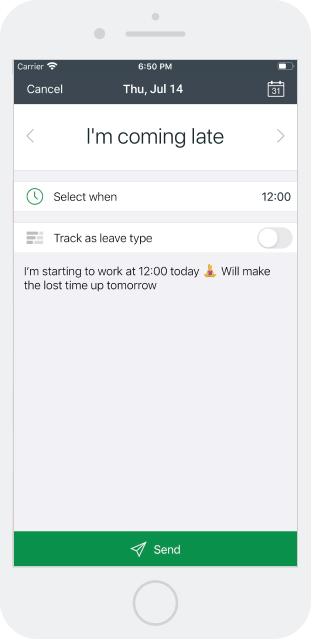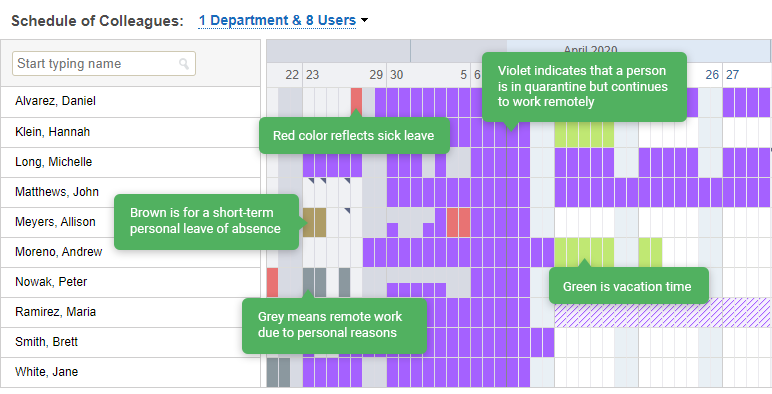The COVID-19 pandemic taught us that unforeseen emergencies can arise at any time. These leave employees with urgent personal or family situations that require their immediate attention.
As an employer, you have to establish clear policies and procedures for handling emergency leave requests sensitively and in compliance with legal requirements.
Let’s take a look at what you can do.
What Is Emergency Leave?
Emergency leave refers to a type of leave granted to employees who face sudden and urgent situations that require their immediate attention. These situations can vary widely but typically include:
- Family emergencies (e.g., sudden illness or injury, death)
- Medical emergencies (e.g., sudden illness, hospitalization)
- Natural disasters (e.g., hurricanes, earthquakes)
- Other unforeseen emergencies that pose an immediate threat to the employee or their family.
Legal Considerations
The laws governing emergency leave vary widely around the world. Some countries have comprehensive systems that provide employees with generous leave entitlements, while others have more limited provisions.
United States
The United States does not have a specific federal law that specifically guarantees emergency leave. However, the Family and Medical Leave Act (FMLA) provides eligible employees with up to 12 weeks of unpaid, job-protected leave for certain family and medical reasons, including emergencies.
Besides that, some states and cities have enacted their own laws, such as the California Family Rights Act (CFRA) and the New York City Paid Safe Leave Law.
These laws also allow employees to take up to 12 weeks of unpaid leave per year for certain emergencies, including the serious illness of a family member, the birth or adoption of a child, or the need to care for a family member with a disability.
United Kingdom
The UK’s Employment Rights Act 1996 provides for a statutory entitlement to emergency leave. Employees are entitled to a “reasonable amount of time off” to deal with an unexpected event that requires immediate attention.
This could include the sudden illness or injury of a family member, the death of a close relative, or the need to attend a medical appointment. The employer does not have to pay the employee for this leave, but they cannot deduct it from their holiday entitlement.
Canada
Canada has a federal law called the Canada Labour Code that provides for unpaid emergency leave. Employees are entitled to take up to five days of unpaid leave per year for personal or family emergencies.
This leave can be used for a variety of reasons, such as the death of a family member, the serious illness of a child, or the need to deal with a family crisis.
In addition, Canadian employees unable to work due to the coronavirus-related illness are entitled to paid leave (CSC Code 699) and the Canada Emergency Response Benefit.
In accordance with this policy, some individuals who involuntarily stopped working due to the COVID-19 outbreak may get temporary financial support in the amount of $500 a week.
France
France has the most comprehensive system of emergency leave laws. The French Labour Code provides for three types of leave:
- Family leave, which can be taken for the birth or adoption of a child, the serious illness of a family member, or the need to accompany a family member with a disability (up to 12 weeks per year).
- Sick leave, which can be taken for the employee’s own illness or injury (up to six months of per year).
- Compassionate (emergency) leave, which can be taken for a variety of unexpected events, such as the death of a close relative, the marriage of a child, or the need to attend a funeral (up to three days per year).
3 Tips for Dealing with Emergency Leave
The availability of emergency leave can have a significant impact on the work-life balance of employees and their ability to meet the demands of both their jobs and their personal lives.
That is why, it is so important for employers not just to be aware of the emergency leave laws in their jurisdiction, but to provide support to employees who need to take time off for personal or family emergencies.
1. Create an Emergency Leave Policy
An emergency leave policy is a set of rules and procedures that govern how employees can take time off from work for unexpected events. It is intended to provide peace of mind for your employees and protect the interests of your business.
Here are some tips to help you develop one:
- Involve employees in discussions about the policy or gather feedback through surveys or focus groups to understand their concerns and needs regarding emergency leave.
- Consult with legal experts to ensure compliance with local labor laws and regulations.
- Once the policy is developed, communicate it clearly to all employees. Consider holding informational sessions or workshops to explain the policy and answer any questions. Ensure that the policy is easily accessible, such as on the company intranet or employee handbook.
- Recognize that emergencies can vary greatly in nature and severity. Allow for flexibility in how the policy is applied, understanding that each situation may require a unique approach.
- Ensure that managers and supervisors are trained on the policy so they can effectively handle requests for emergency leave.
2. Promote Awareness of Emergency Leave Among Employees
The availability of emergency leave can have a significant impact on the work-life balance of employees and their ability to meet the demands of both their jobs and their personal lives. So, it is crucial for them to know that they have the support of their employer in a difficult situation.
Strategies for Promoting Emergency Leave Awareness
- Establish clear communication channels for sharing information about the emergency leave policy. Use multiple platforms such as emails, newsletters, intranet postings, and team meetings to ensure that the message reaches all employees. Consider creating a dedicated section on the company intranet where employees can easily access the policy and related resources.
- Host training sessions or workshops to educate employees about the emergency leave policy. These sessions can include role-playing scenarios, Q&A segments, and discussions about what constitutes an emergency.
- Create visual reminders of the emergency leave policy, such as posters or infographics, and display them in common areas like break rooms or hallways.
- Share real-life stories (anonymously, if necessary) of how the emergency leave policy has positively impacted employees during challenging times. These stories can help humanize the policy and demonstrate its importance in supporting employees when they need it most.
3. Implement a Tool for Employee Leave and Schedule Management
An emergency leave request is a stress both for an employee and employer. Therefore, it’s crucial to process such requests promptly and tactfully.
Implementing a piece of software for leave and schedule management will help to maintain both employee comfort and business operational efficiency.
Let’s explore how this can be done by using actiPLANS.
Streamline request submission and approval
With leave actiPLANS, employees can easily submit their emergency leave requests through a user-friendly interface. Once a request is submitted, the system automatically notifies the appropriate manager or HR personnel.
This eliminates the need for cumbersome paperwork or lengthy email chains, allowing employees to focus on their urgent situation rather than administrative hurdles and receive timely responses when they need them most.
Customize leave policies
You can tailor actiPLANS to reflect specific leave policies and create custom leave types including those related to emergency situations.
Such customization ensures that all employees are aware of their rights and responsibilities regarding emergency leave, fostering a culture of compliance and understanding.

Enhance communication
actiPLANS includes built-in comments that facilitate direct communication between employees and managers. This ensures that any questions or concerns can be addressed swiftly, fostering a supportive environment.

Centralize workload management
actiPLANS is equipped with tools that help managers assess team availability and quickly redistribute tasks or shifts during an employee’s absence.
This capability ensures that business operations continue smoothly even when unexpected emergencies arise.

Last but Not Least
Having a robust system for managing emergency leave requests is essential for both employees and employers. By investing in such technology, organizations can foster a supportive workplace culture that prioritizes employee well-being while also ensuring that business needs are met effectively.
However, no policy or software can replace empathy and compassion.
Start a 30-day free actiPLANS trial today to create a human-centered workplace tomorrow!



